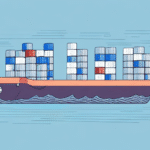Understanding CBM in Shipping: Definition and Importance
CBM, short for Cubic Meter, is a fundamental shipping term used in the freight industry to measure the volume of a shipment. It is calculated by multiplying the length, width, and height of the shipment's dimensions, all measured in meters. The resulting figure indicates the amount of space the shipment occupies in the cargo hold. While weight is an essential factor in shipping, there are instances where bulky but light cargo may impose more significant logistical challenges and higher costs. This is where CBM plays a crucial role in determining the shipment's cost, helping to avoid confusion and unnecessary expenditures.
Understanding CBM is essential for shippers, freight forwarders, and carriers to ensure efficient logistics and cost optimization. By accurately calculating CBM, businesses can plan their logistics and budget accordingly, ensuring that they are not overcharged for the shipment's space. Additionally, cargo carriers use CBM to optimize their cargo space, reducing transportation costs and increasing profitability.
Impact of CBM on Shipping Costs and Logistics
CBM plays a significant role in determining the cost of a shipment. The higher the CBM, the more space the shipment occupies, resulting in higher transportation costs. Carriers often limit the amount of freight a single container can hold, making CBM a crucial consideration in selecting the appropriate mode of transportation. Understanding the CBM of a shipment helps in selecting the proper container size or mode of transportation to optimize costs.
Moreover, CBM affects the efficiency of logistics operations. A shipment with a higher CBM requires more space and handling time, which can lead to delays in loading and unloading. This can disrupt the supply chain and impact the delivery schedule. Accurate CBM calculations are essential for timely delivery and avoiding additional costs.
According to the United Nations Conference on Trade and Development (UNCTAD), optimizing CBM can lead to significant cost savings and efficiency improvements in global shipping operations.
CBM in Freight Forwarding
Freight forwarders are responsible for ensuring the efficient and safe transportation of shipments on behalf of shippers. Accurate CBM measurement helps freight forwarders determine the most appropriate way to transport the shipment while minimizing transportation costs. They guide shippers on packing and loading procedures to ensure the shipment occupies the least amount of space possible.
In addition to cost savings, CBM measurement plays a crucial role in ensuring the safety of the shipment during transportation. Freight forwarders use CBM to determine the maximum weight and size of the shipment that can be safely transported on a particular mode of transportation, preventing overloading and ensuring safe transit.
Furthermore, CBM is vital for customs clearance procedures. Many countries regulate the maximum size and weight of shipments that can be imported or exported. Freight forwarders use CBM to ensure compliance with these regulations, avoiding delays or penalties during customs clearance.
CBM in Containerized Shipping
In containerized shipping, CBM is a critical consideration. Most carriers transport fully loaded containers, making accurate CBM measurements essential for container selection. CBM helps determine the most appropriate container size to avoid space wastage while ensuring the shipment is well-secured.
CBM also impacts freight rates. It is used to calculate the volume of cargo a container can hold, which is a key factor in determining shipping costs. Accurate CBM measurements prevent overpaying for shipping or underutilizing container space.
Moreover, CBM plays a significant role in customs clearance. Customs officials use CBM measurements to verify the declared value of goods and ensure the correct duties and taxes are paid. Incorrect CBM measurements can result in delays, fines, and even seizure of the shipment.
How to Calculate CBM: A Comprehensive Guide
Calculating CBM is a straightforward process. Multiply the length, width, and height of the shipment's dimensions, all measured in meters. For example, a package with a length of 1.2 meters, a width of 0.8 meters, and a height of 0.5 meters will have a CBM of:
- 1.2m x 0.8m x 0.5m = 0.48 CBM
It's essential to use the correct units of measurement to ensure accuracy. Additionally, consider any irregularities in the shape of the shipment, as this can affect the CBM calculation. Measuring the shipment at its widest points ensures an accurate CBM calculation.
For more detailed methodologies and tools for CBM calculation, refer to resources such as the Shipping Container Hubs CBM Calculator.
Common Misconceptions about CBM in Shipping
One common misconception is that weight is more critical than CBM in determining shipping costs. While weight is important, especially for certain transportation modes, in containerized shipping, CBM is equally crucial. Another misconception is that CBM calculation solely depends on the weight of the shipment, which is incorrect. CBM depends on the shipment's dimensions, not its weight.
Understanding the balance between weight and volume is essential for accurate shipping cost estimations and logistics planning.
Optimizing Your Shipping Strategy with CBM
Understanding and accurately calculating CBM allows businesses to optimize their shipping strategies by:
- Selecting the most appropriate mode of transportation
- Choosing the right container size
- Implementing effective packing and loading techniques
These optimizations ensure efficient logistics, reduce transportation costs, and minimize the risk of damage to shipments. Accurate CBM calculations help shippers save money and avoid unnecessary delays.
Benefits of Using CBM for International Trade
CBM offers several benefits for international trade, including:
- Minimizing shipping costs by optimizing space usage
- Selecting appropriate transportation modes and container sizes
- Reducing the risk of damage to shipments
Additionally, accurate CBM measurements help traders comply with international regulations regarding shipment size and weight, ensuring smooth and hassle-free trade operations.
Optimizing CBM also contributes to sustainability by reducing the number of containers required, thereby lowering carbon emissions associated with transportation.
The Future of CBM in Shipping: Trends and Predictions
The freight industry is continuously evolving, and so is the use of CBM in shipping. Technological innovations are expected to lead to more precise and automated CBM measurements, improving efficiency. Integration of CBM data with other shipping metrics will provide shippers with a comprehensive view of their cargo, enabling better logistical decisions.
Furthermore, there is an increasing focus on sustainability in shipping. CBM will play a crucial role in reducing carbon emissions by optimizing cargo space and minimizing the number of trips required to transport goods. As the industry advances, CBM will remain a fundamental metric driving efficiency, sustainability, and cost savings in shipping.






















